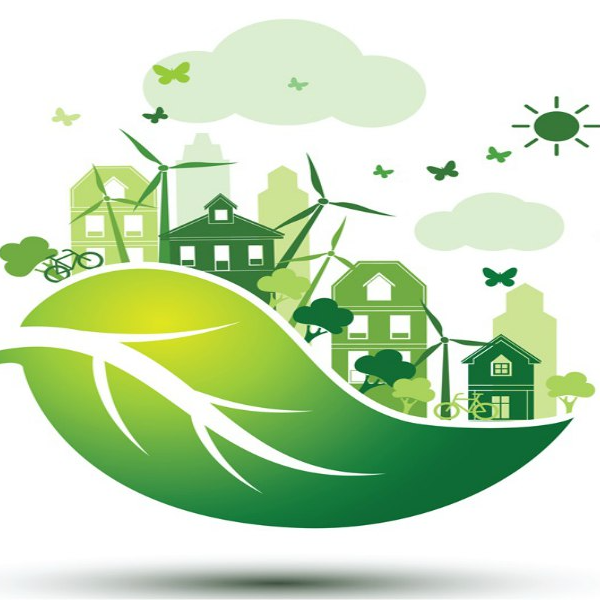
Description
Waste-to-Energy (WtE) system Is a set of sub-systems designed to convert various types of waste materials into usable energy forms, thereby contributing to both waste management and energy production. This solution addresses the dual challenge of reducing environmental impact through proper waste disposal while harnessing the potential energy content of waste materials.
Key Features
1.Incineration Technology
High-Temperature Combustion: Incineration involves the controlled burning of waste materials at high temperatures, typically in specialized facilities.
Heat Recovery: The heat generated during incineration is harnessed to produce steam, which powers turbines to generate electricity.
Volume Reduction: Incineration reduces the volume of waste and minimizes the need for landfill disposal.
2. Gasification
Syngas Production: Gasification converts solid waste into syngas, a mixture of carbon monoxide, hydrogen, and methane.
Versatility: Syngas can be utilized for electricity generation or as a feedstock for the production of biofuels and chemicals.
Reduced Emissions: Gasification often produces lower emissions compared to traditional incineration.
3. Pyrolysis
Thermal Decomposition: Pyrolysis involves heating organic waste in the absence of oxygen, producing biochar, bio-oil, and syngas.
Biochar Utilization: Biochar can be used as a soil amendment to improve agricultural productivity.
Bio-oil as Fuel: Bio-oil can serve as a renewable fuel source.
4. Anaerobic Digestion
Biological Decomposition: Anaerobic digestion employs microorganisms to break down organic waste in the absence of oxygen.
Biogas Production: The process generates biogas, primarily methane, which can be used for heating or electricity generation.
Digestate: The residual material, known as digestate, can be used as a nutrient-rich fertilizer.
5. Environmental Control Systems
Emission Control: WtE facilities are equipped with advanced technologies to control and minimize emissions of pollutants such as particulate matter, nitrogen oxides, and sulfur dioxide.
Ash Management: Systems are in place to manage and utilize the ash generated during the waste conversion process.
6. Integration with Circular Economy
Resource Recovery: WtE technologies contribute to resource recovery by extracting energy from waste materials and reducing the reliance on finite fossil fuels.
Waste Diversion: By converting waste into energy, these technologies divert materials from landfills, promoting a circular economy approach.
7. Technological Advancements:
Efficiency Improvements: Ongoing advancements in technology aim to enhance the overall efficiency of WtE processes.
Innovation: Research and development focus on improving the environmental performance, energy recovery rates, and overall sustainability of WtE technologies.
Benefits
1.Energy Generation:
Renewable Energy Production: WtE technologies convert waste into renewable energy sources such as electricity and heat, contributing to diversified and sustainable energy portfolios.
2.Waste Reduction:
Volume Reduction: By converting waste into energy, these technologies reduce the volume of waste that would otherwise end up in landfills, extending the lifespan of existing waste disposal sites.
3.Greenhouse Gas Emission Reduction:
Mitigation of Methane Emissions: WtE processes help mitigate the release of methane, a potent greenhouse gas produced during the decomposition of organic waste in landfills.
4. Landfill Diversion:
Decreased Reliance on Landfills: WtE technologies divert a significant portion of waste from landfills, reducing the environmental impact associated with land disposal and mitigating potential soil and water contamination.
5. Resource Recovery:
Recovery of Valuable Resources: WtE processes often extract valuable resources, such as metals, from the waste stream, contributing to resource recovery and recycling efforts.
6. Air Quality Improvement:
Emission Control Technologies: WtE facilities are equipped with advanced emission control technologies, reducing the release of pollutants into the atmosphere and improving air quality.
7. Job Creation:
Employment Opportunities: The planning, construction, and operation of WtE facilities create job opportunities in various stages of the waste management and energy production process.
8. Circular Economy Contribution:
Integration with Circular Economy Principles: WtE technologies align with the principles of a circular economy by promoting resource efficiency and minimizing the environmental impact of waste.
9. Energy Security:
Diversification of Energy Sources: WtE contributes to energy security by diversifying energy sources, reducing dependence on finite fossil fuels, and providing a reliable source of baseload power.
10. Community Benefits:
Local Energy Production: Locally produced energy from WtE facilities can enhance community resilience and contribute to energy independence.
11. Waste Management Optimization:
Complementary to Recycling: WtE technologies are often integrated into comprehensive waste management systems, complementing recycling efforts and providing a solution for non-recyclable waste.
12. Reduced Environmental Impact:
Lower Environmental Footprint: Compared to traditional waste disposal methods, WtE technologies can have a lower environmental footprint, particularly when considering emissions and land use.
13. Climate Change Mitigation:
Contribution to Climate Goals: WtE technologies contribute to global efforts to mitigate climate change by reducing greenhouse gas emissions, promoting sustainable practices, and supporting the transition to a low-carbon economy.
Pricing Options
- Annual subscription: Contact-us
Targeted Customers
- Food & Agri Tech
- Food Company Investors
- Biotechnology & Healthcare Tech
- Energy Tech
Solution Type
- Product
- Service
- Saas Software